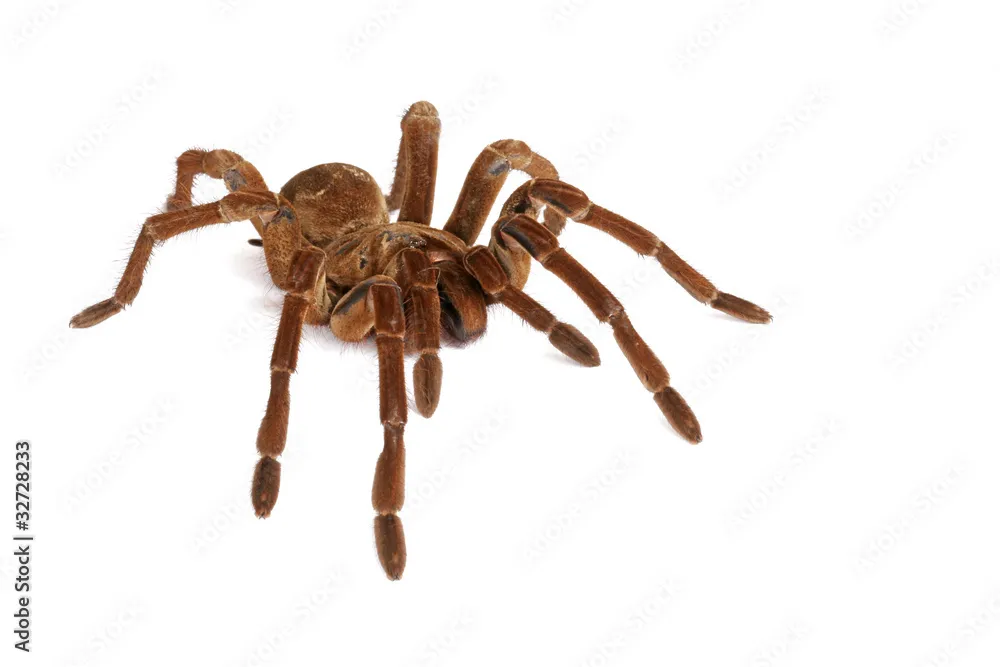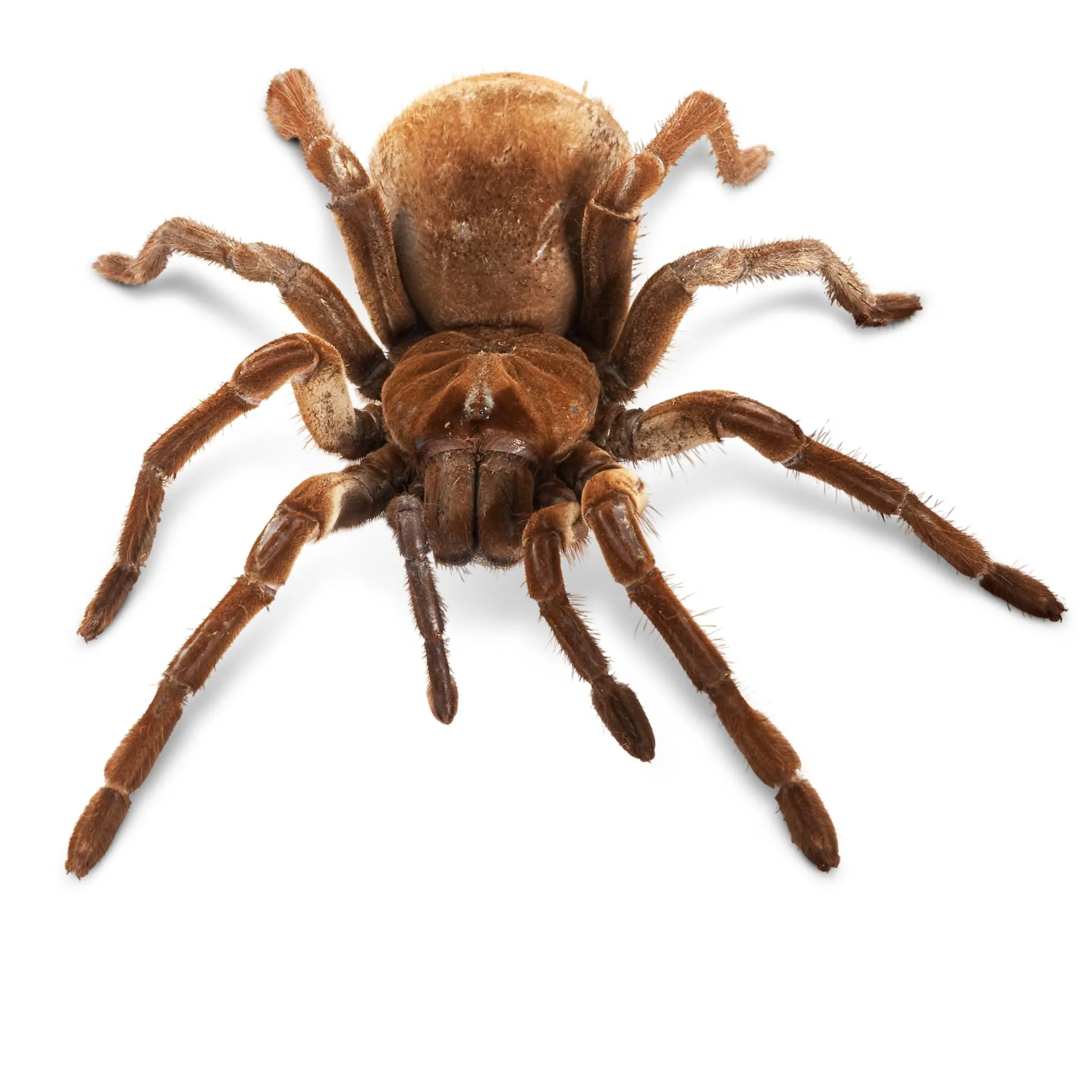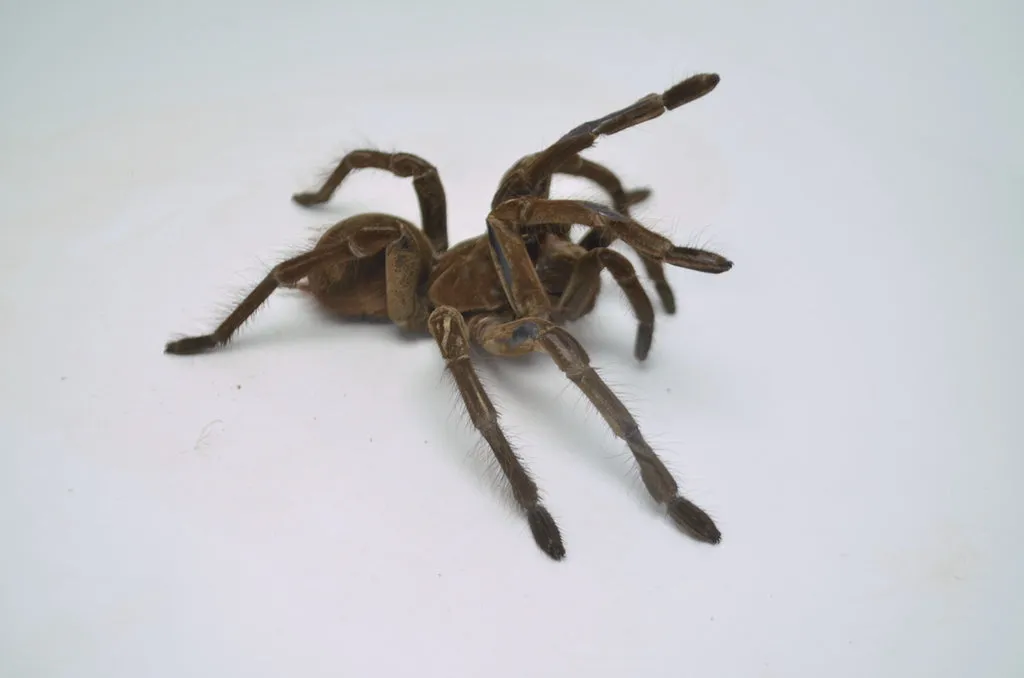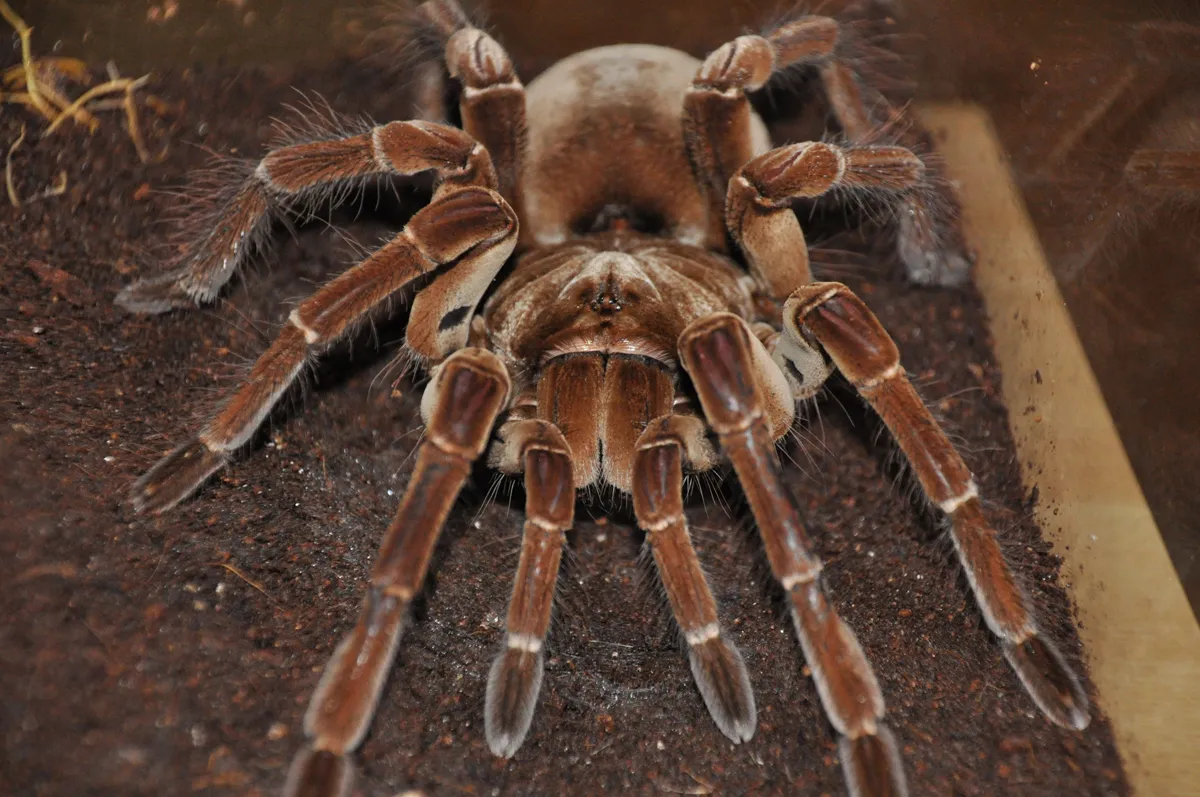What is the Goliath Birdeater Tarantula?
The Goliath Birdeater Tarantula, scientifically known as Theraphosa blondi, is one of the largest spiders in the world, a behemoth of the arachnid world. Hailing from the rainforests of South America, this impressive creature is known for its considerable size and imposing presence. With a leg span that can reach up to a foot, these tarantulas are truly a sight to behold. Their size is not the only remarkable feature they possess; their behavior and interactions with their environment also set them apart. This article will delve into the various predators that pose a threat to this majestic spider and the strategies it employs to survive in its natural habitat. Understanding the predators of the Goliath Birdeater Tarantula provides a fascinating insight into the complex web of life in its ecosystem.
Physical Characteristics and Habitat
The Goliath Birdeater Tarantula boasts a robust build, with a body covered in bristly hairs ranging in color from dark brown to light tan. This coloration helps it blend seamlessly with the forest floor. They typically weigh around 6 ounces, but some can exceed this weight. Their massive size is a key factor in their survival, as it makes them a formidable opponent for many potential predators. These tarantulas are primarily found in the rainforests and swampy areas of northern South America, including countries such as Brazil, Venezuela, Guyana, Suriname, and French Guiana. They construct burrows in the ground, often under tree roots or within the leaf litter, providing a safe haven from predators and the harsh elements. The humid and warm environment of their habitat is crucial for their survival, offering the ideal conditions for hunting and reproduction.
Key Predators of the Goliath Birdeater Tarantula

Despite their imposing size, Goliath Birdeater Tarantulas are not invulnerable. Several predators have evolved strategies to hunt these spiders. Their position at the top of the food chain is constantly challenged. The survival of these giant arachnids depends heavily on their ability to evade and defend against these threats. Understanding the range of predators helps us appreciate the complexities of the ecosystem in which the Goliath Birdeater lives.
Snakes
Snakes, particularly larger species, are among the most significant predators of the Goliath Birdeater Tarantula. Their slender bodies allow them to maneuver through the burrows and other hiding places where the tarantulas reside. Snakes use their agility and stealth to ambush the tarantulas, often targeting the vulnerable molting spiders. Their ability to swallow large prey makes the Goliath Birdeater a potential meal. The constant threat of snake predation forces the tarantulas to stay alert, and use defensive measures to protect themselves.
Large Lizards
Large lizards, such as tegus, also pose a threat. These reptiles are opportunistic predators that are well-equipped to hunt spiders. Their strong jaws and sharp teeth make them effective at capturing and consuming the tarantulas. Lizards often search for the tarantulas in their burrows, using their senses to locate their prey. The Goliath Birdeater, in turn, employs several defensive strategies to avoid becoming a lizard’s lunch, including their urticating hairs and venom.
Birds of Prey

Birds of prey, such as hawks and eagles, can pose a significant threat, particularly to younger or smaller Goliath Birdeater Tarantulas. These birds have sharp talons and keen eyesight, allowing them to spot the spiders from above. They swoop down from the trees to capture the spiders. Although the Goliath Birdeater is large, its size makes it a tempting target for these aerial hunters. This constant risk has shaped the tarantula’s behavior, influencing how they hunt and where they choose to live. Their camouflage and burrowing habits are important survival adaptations.
Mammals
Various mammals, including opossums and coatis, are known to prey on Goliath Birdeater Tarantulas. These animals are often omnivorous and have developed the ability to find and dig up tarantula burrows. The Goliath Birdeater Tarantula’s large size does not always deter mammals. The persistence and scavenging abilities of these mammals make them formidable predators. These predators are constantly adapting, increasing the pressure on the tarantulas and driving the need for more effective defense mechanisms.
Insects and Other Arachnids
Though the Goliath Birdeater Tarantula is large, it is not immune to being hunted by other arachnids, such as the smaller, more agile spiders. Some insect species, such as certain types of wasps, are also predators. These smaller creatures can be a threat, particularly to young tarantulas or those that are vulnerable. The constant need to be aware of threats from both small and large predators shapes the behavior and survival strategies of the Goliath Birdeater Tarantula.
The Goliath Birdeater Tarantula’s Defense Mechanisms

To survive in its environment, the Goliath Birdeater Tarantula has evolved several defense mechanisms. These strategies allow it to fight off predators. The effectiveness of these defenses is crucial to its survival. The interaction between predator and prey is a constant arms race, with each side trying to outwit the other. The tarantula’s survival depends on its defense mechanisms.
Bite and Venom
The Goliath Birdeater Tarantula, like all tarantulas, has fangs and can deliver a venomous bite. While their venom is not typically lethal to humans, it can cause pain, muscle cramps, and other unpleasant symptoms. The primary function of their venom is to subdue prey, but it also serves as a defensive tool against predators. The bite, combined with the spider’s size, is often enough to deter smaller predators. The threat of a painful bite gives the tarantula an edge in confrontations.
Urticating Hairs
One of the most distinctive defenses of the Goliath Birdeater Tarantula is its urticating hairs. These hairs are found on the abdomen of the spider and are designed to irritate predators. When threatened, the tarantula flicks these hairs into the air or toward its attacker. If these hairs make contact with the eyes, skin, or mucous membranes, they cause intense itching and irritation. This defense mechanism is highly effective against both mammals and birds, giving the tarantula a critical advantage in avoiding predation.
Camouflage and Burrowing

The Goliath Birdeater Tarantula’s coloration, which blends with the forest floor, provides effective camouflage. Its ability to construct burrows also enhances its defense. These burrows offer a safe retreat from predators and protection from the elements. The burrows are often constructed under the roots of trees or in other hidden locations, making it difficult for predators to find them. These strategies, combined with the spider’s size and other defenses, enhance its ability to survive in a world filled with predators.
Impact of Predators on Tarantula Populations
Predation plays a vital role in regulating the populations of Goliath Birdeater Tarantulas. The pressure from predators helps to maintain a healthy ecosystem. By preying on the tarantulas, predators contribute to the balance of the food web. The removal of the predators could lead to an imbalance. The complex interactions between predator and prey highlight the intricate nature of the rainforest ecosystem.
Conservation Status and Threats
Although the Goliath Birdeater Tarantula is not currently listed as endangered, it faces several threats that could impact its conservation status. Habitat loss due to deforestation and human activities poses the greatest threat to their survival. As their rainforest habitat is destroyed, they are forced to compete with other species. Illegal collection for the pet trade also has a negative impact on tarantula populations. Understanding the threats that they face is critical to developing conservation strategies to protect them and their natural habitat.
In conclusion, the Goliath Birdeater Tarantula is an amazing creature with an interesting life. This giant spider has evolved effective defenses against a variety of predators. Conservation efforts are essential to ensure their survival and the preservation of the rainforest ecosystems they call home.
